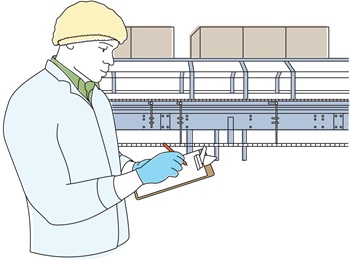The Secret to Raising Your SQF Audit Score
 During SQF Global, Kris Middleton, of Bureau Veritas Group shared with the SQF Global audience an insightful session, The Secret to Raising Your SQF Audit Score. I was thrilled to see Kris be awarded the SQF Auditor of the Year Award at the event too!
During SQF Global, Kris Middleton, of Bureau Veritas Group shared with the SQF Global audience an insightful session, The Secret to Raising Your SQF Audit Score. I was thrilled to see Kris be awarded the SQF Auditor of the Year Award at the event too!
In a session organized for both sites and auditors, Kris walked the audience through the secret sauce for perfecting your SQF audit by using verification and corrective action processes correctly to eliminate root causes and ensure the ongoing success of your SQF System.
The most effective way to raise your audit scores is to:
- Effectively identify non-conformities when they are observed;
- Implement actions to immediately address issues when they are noted; and
- Implement corrective and preventative actions that will eliminate the issues from recurring.
To begin, it was stressed that you need to know the definitions of these two words and the differences between them.
- Non-conformity/non-conformance
- Correction/corrective action or preventive action
Per ISO/IEC 19011: non-conformance (or non-conformity) is non-fulfillment of a requirement.
Minor – is evidence of a random or infrequent failure to maintain compliance to a requirement, but does not indicate a breakdown in the food safety management system or that food safety is compromised. It is evidence of an incomplete or inappropriate implementation of SQF requirements, which, if not corrected, could lead to system element breakdown
Major – is a failure of a system element, a systemic breakdown in the food safety management system, a serious deviation from the requirements, and/or absence of evidence demonstrating compliance to an applicable system element or Good Operating Practices. It is evidence of a food safety risk to products included in the scope of certification.
Critical – is a breakdown of control(s) at a critical control point, a pre-requisite program, or other process step and judged likely to cause a significant public health risk and/or product contamination. A critical non-conformance is also raised if the certification body deems that there is systemic falsification of records relating to food safety controls and the SQF System.
Correction/Corrective Action (Preventative Action)
Correction – Action to eliminate a detected non-conformity. Shall have the same meaning as “corrected.”
Corrective Action – Action to eliminate the cause of a detected non-conformity identified at a food safety audit, a deviation identified at a quality audit, or other undesirable situation and to prevent recurrence. Also referred to as “corrective and preventative action.”
Other important definitions reviewed included root cause analysis, validation, verification, systemic approach, and bundled approach. Mr. Middleton shared his recommendation to utilize Fishbone/Ishikawa Diagram as a visual tool to allow for many to understand the problem easily, gain full participation from multiple team members as it looks at different causal agents, and provide a more “systematic” way of looking at a problem. There were detailed examples provided in the session and ways to involve multi-disciplinary teams to help ensure all possible root causes are identified and eliminated.
If you missed the SQF Global session, to discover what SQFI expects sites to be doing as part of their implemented SQF system and how non-conformances and corrective actions from SQF audits will be handled in the newly released Edition 9, you can dive into this recorded content in the SQF November All Access Pass.

